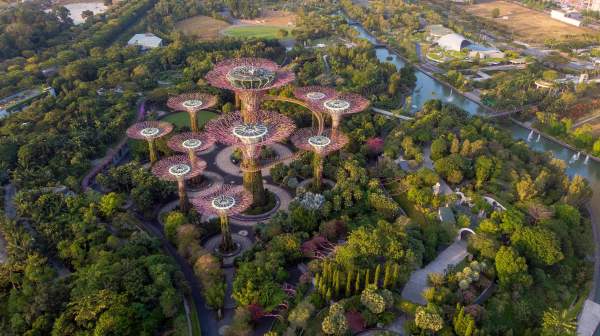
The 10 Greenest Cities in the World: Pioneering Sustainability
As we experience the detrimental effects of climate change, a shift towards sustainable living has become a global imperative. Urban centers worldwide are starting to acknowledge this reality, and in response, they are implementing transformative measures to become greener. These are the cities at the forefront of environmental sustainability, leading the global march towards a more sustainable future. Here are the ten greenest cities in the world as of 2023:
Copenhagen, Denmark
Copenhagen is often hailed as the greenest city globally, with its ambition to become carbon neutral by 2025. The city has invested heavily in wind power, an area where Denmark already excels. With an extensive cycling infrastructure, over 60% of the residents use bicycles for daily commuting. Moreover, the harbor's water quality is so high that locals can swim in it – a testament to the city's excellent waste management strategies.

Photo: unsplash.com/venusmajor
Stockholm, Sweden
Stockholm was the first city to be awarded the European Green Capital title by the EU in 2010. It's well on its way to achieving its goal of being fossil fuel-free by 2040. Stockholm's commitment to renewable energy, urban mobility, biodiversity, and conservation has earned it a high spot on this list.

Photo: unsplash.com/mauriceyang
Helsinki, Finland
Helsinki's green ambitions are vast and expansive, with plans to become carbon-neutral by 2035. From embracing renewable energy sources to promoting sustainable food production, and encouraging eco-friendly transportation, Helsinki has shown its commitment to sustainability.

Photo: unsplash.com/tap5a
Amsterdam, Netherlands
Renowned for its vast network of canals and cycling infrastructure, Amsterdam is deeply committed to green living. It aims to achieve a complete switch from gas to renewable energy sources by 2040. The city's "circular economy" strategy focuses on reusing materials and reducing waste, contributing to its green reputation.

Photo: unsplash.com/adrienolichon
Berlin, Germany
With over 2,500 public parks and gardens, Berlin is often referred to as the "green lung" of Germany. The city is actively promoting e-mobility and has a robust recycling system in place. It aims to become climate-neutral by 2050, with plans to use only renewable energy in the public transport network by 2030.

Photo: unsplash.com/vradenburg
Vancouver, Canada
Vancouver aims to be the greenest city in the world by 2025. The city excels in green building design and community planning, focusing on energy efficiency. It's also striving to enhance urban green spaces and has a comprehensive Greenest City Action Plan that guides its sustainability goals.

Photo: unsplash.com/jerroams
Oslo, Norway
As the European Green Capital in 2019, Oslo has an impressive track record in sustainability. The city encourages electric vehicle use, with over half the cars being electric or hybrid. It's also focusing on reducing emissions from public transport and increasing biodiversity by creating new green spaces.

Photo: unsplash.com/gunnarridder
San Francisco, United States
San Francisco, with its aggressive waste management policies, is the greenest city in the US. It has achieved an 80% landfill diversion rate and has banned the sale of plastic water bottles on city property. It's also one of the leading cities in the country when it comes to renewable energy usage.

Photo: unsplash.com/mana5280
Singapore, Singapore
Known as the "Garden City," Singapore has seamlessly integrated lush greenery with urban infrastructure. Despite its dense population, the city maintains its commitment to sustainability through policies focused on water efficiency, clean energy, and waste management.

Photo: unsplash.com/sergiosala
Melbourne, Australia
Melbourne is a global leader in sustainability, with plans to become carbon-neutral by 2020. The city encourages residents to be active participants in green initiatives, like community gardens, and promotes sustainable transportation. Its Urban Forest Strategy aims to increase the canopy cover to 40% by 2040, reducing the city's temperature and strengthening its resilience to climate change.

Photo: unsplash.com/tbassett
Each of these cities serves as an example, demonstrating that urban areas can maintain a high standard of living while prioritizing sustainability. In our changing world, these cities shine as beacons of hope and innovation, showing us the way forward in the journey towards a sustainable future. Their strategies and practices must be learned from, adapted, and applied, as we all have a role to play in safeguarding our planet.


